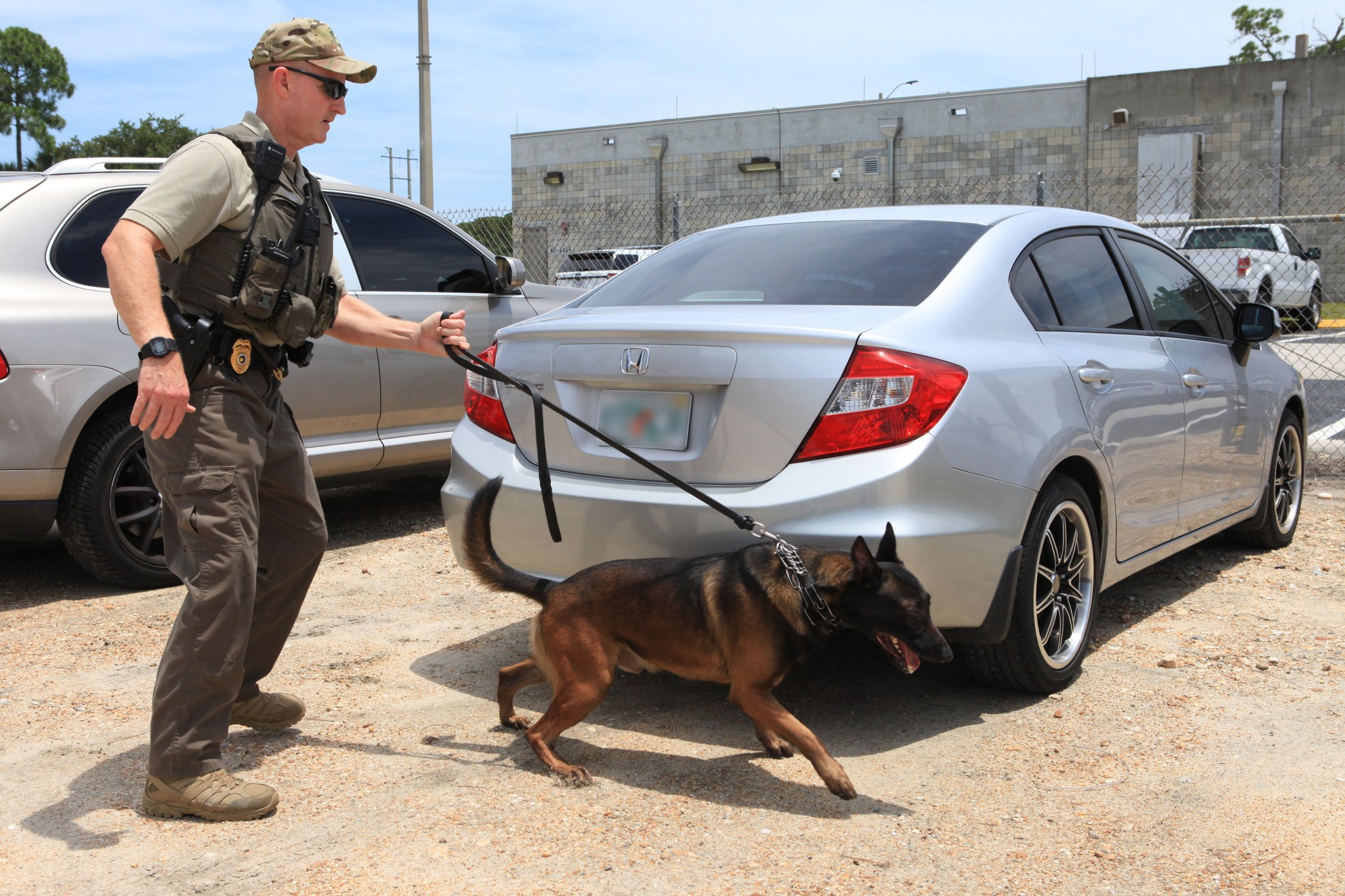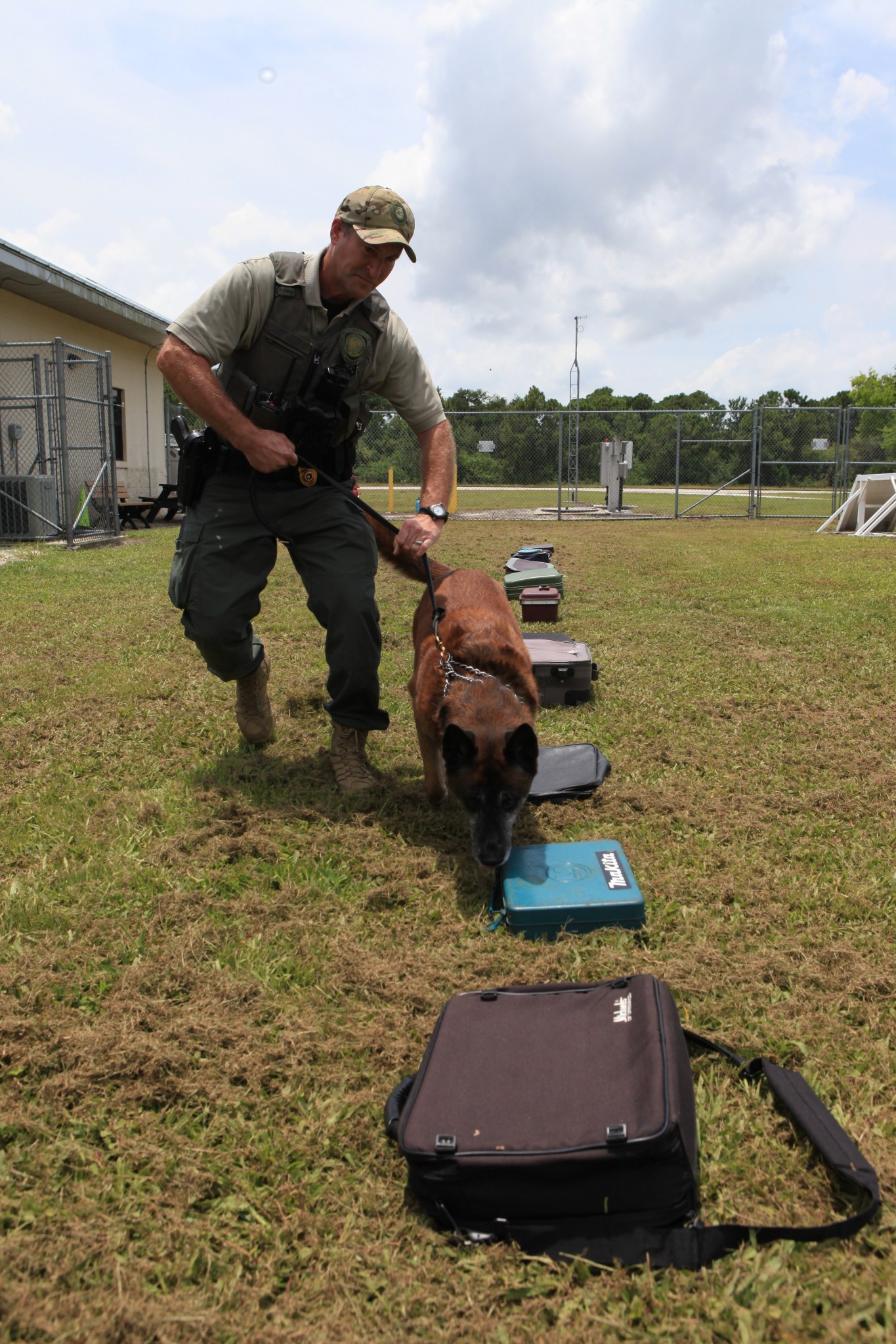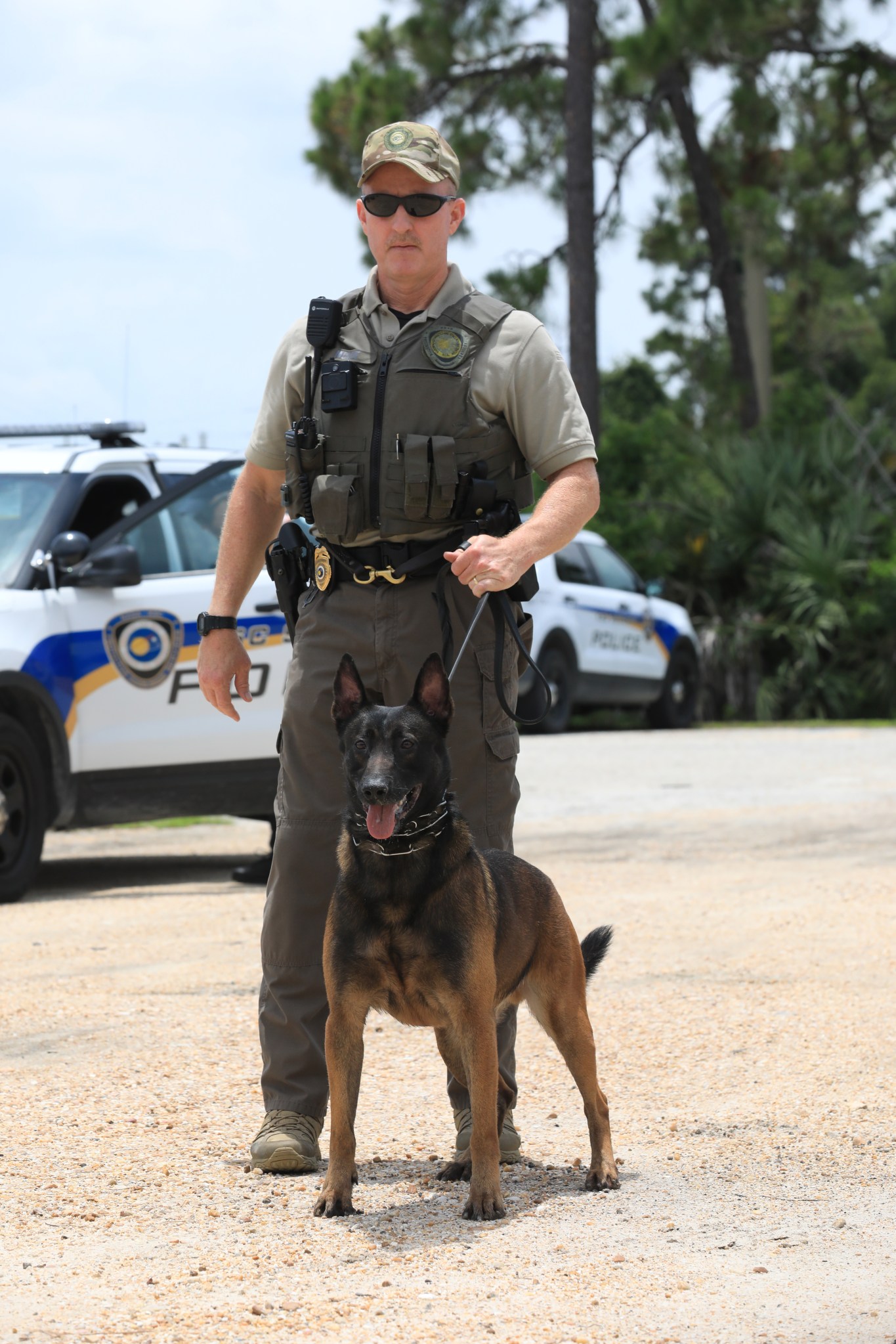Safety of people and assets are the number one priority at NASA’s Kennedy Space Center in Florida. Some of the hardest working employees keeping the center safe perform their jobs on four paws. They are the specially trained K-9s in Kennedy’s Protective Services Office in the Spaceport Integration and Services Directorate.
Though the space shuttle is no longer launching, there is plenty of work for the K-9s to do as the multi-user spaceport prepares for Artemis launches to the Moon and on to Mars, and commercial partner launches to the International Space Station.
“We are here to protect the employees and the assets,” said Chris Vaughn, K-9 supervisor and kennel master with Chenega Infinity LLC. “This is our mission. It’s all about safety.”
A normal day’s activities include sweeps of designated facilities, parking lots and random vehicle inspections at entrance gates. During rocket launches, they are out and about performing sweeps of facilities and launch site viewing areas.
Before arriving at Kennedy, each of the dogs is selected by Vaughn. They are mostly Belgian Malinois from Holland. There are certain traits or qualities Vaughn and his team are looking for, including their inherent drives for hunting, retrieving, playing and fighting to name just a few.
“These drives enable the dogs to be trained to the high standards required by the Kennedy Space Center’s K-9 Unit. They have to be the best of the best,” Vaughn said. “The K-9s are meant to be used as a deterrent.”
Kennedy’s K-9 unit is all male, with median ages of 2 to 11 years old. The dogs are put through three months of training focusing on detection, criminal apprehension and man tracking when they first arrive at the center. Each K-9 Unit goes through an additional 10 weeks of training with their assigned officer/handler tailored to Kennedy requirements, which includes narcotics and explosives detection, criminal apprehension and man tracking to assist with the center’s Emergency Response Team and tracking felons trying to evade arrest.
“The K-9s become their handlers’ partners,” said Roger Langevin, Kennedy Protective Services special agent and chief of Security. “We depend on them just as we would depend on another law enforcement officer.”
The K-9s are hard workers, supporting the center 24/7, 365 days. They have a lot of ground to cover, including Kennedy property, which includes some property outside of the gates, and the Merritt Island National Wildlife Refuge. That’s about 140,000 acres. They can detect the presence of narcotics and explosives, track criminals and even locate lost people. When called upon, the K-9 unit also supports local law enforcement requests.
When the dogs aren’t out in the field, they are at the kennel where they are put through daily training and exercise routines. They also receive additional training on a weekly, monthly and annual basis to keep up-to-date on certifications.
As K-9s retire from active service, they either retire home with their handler or remain on center at the Law Enforcement Academy, where they continue to receive care. They may make occasional appearances at events on the center.




























